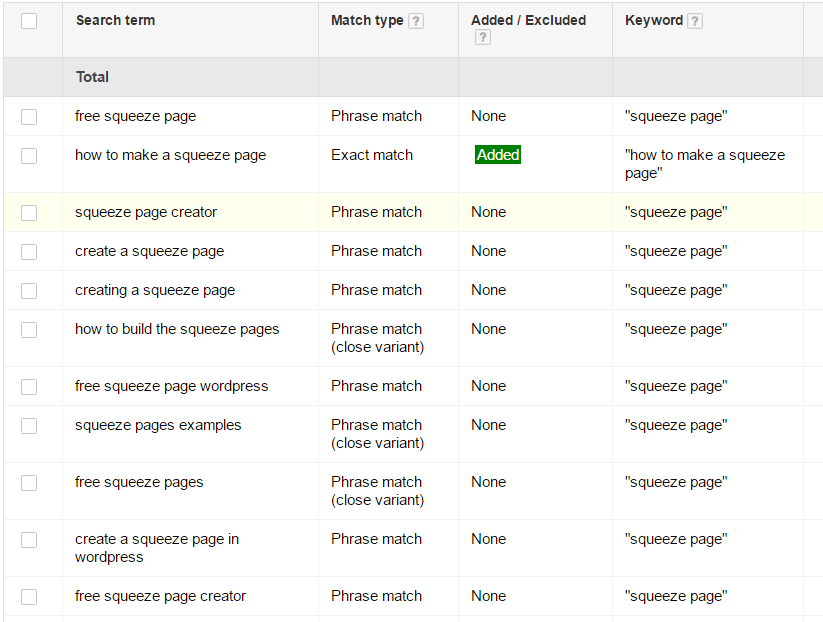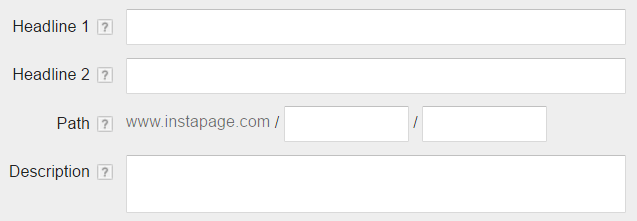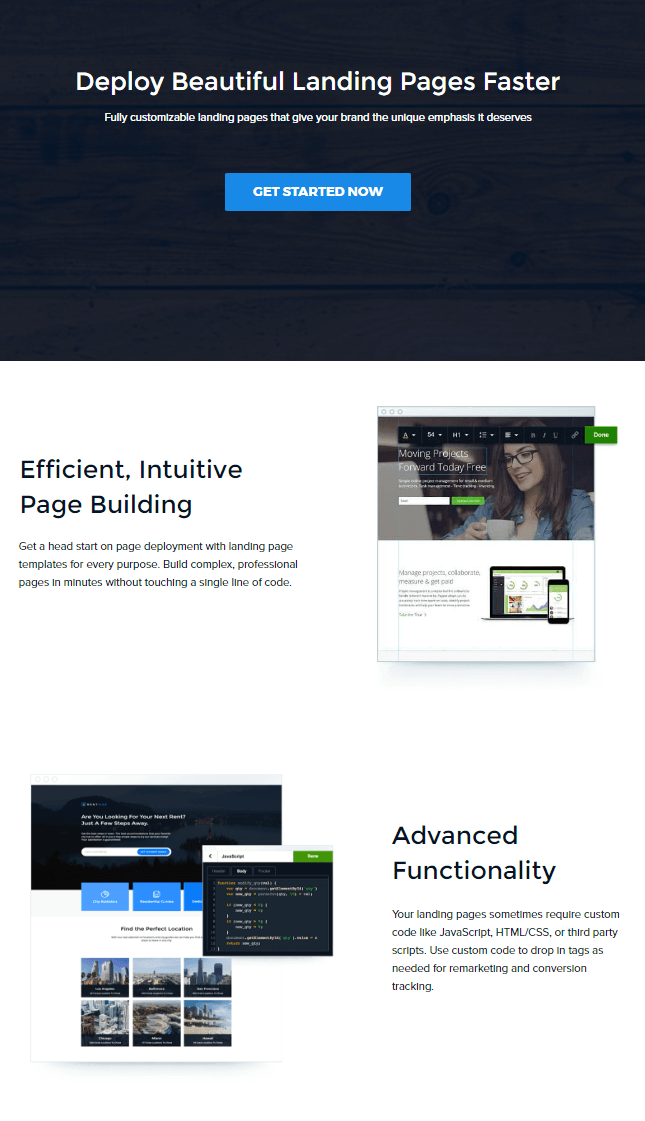People often use search engines like Google to find appealing solutions when faced with specific problems. If your product offers an appealing solution, then this moment gives you an excellent opportunity to engage potential customers. People will pay for your product or service if you convince them you’re the answer to their problem.
How to write ad copy that yields the best results
1. Reach the people that want to find you
Google text ads allow you to reach the right audience by providing visibility at exactly the moment potential customers are most open to making a purchase. Writing captivating, persuasive copy is especially important given such a small, limiting format (more on this later).
Tips about technical details such as title case, dynamic keyword insertion, or placing the keyword in the headline are helpful and included in this article, but they do little without the foundation of a persuasive, compelling message of value. The process of crafting copy comes first. Deal with the idiosyncrasies of specific ad platforms second.
2. Tell them what you sell
You can do surprisingly well with Google Ads by simply following Google’s advice. For instance, Google recommends showing value to viewers without giving the impression of pushiness or sales language whenever you craft ad copy. This advice agrees with a basic principle of ad copy from David Ogilvy’s foundational book Ogilvy on Advertising. Tell them what you sell and how buying your product will improve their lives.
This CorpWriting ad is rich with value without any “buy now” language:

Keep your focus on user needs and the benefit your offer provides to meet those needs. Researchers from Microsoft showed that accounting for user desires when crafting ads resulted in a significant lift in CTR, compared to only accounting for historical click patterns and relevance data.
3. Identify user motivation
You may understand the motivation behind the original development of your product, but user research can help you understand customer motivation for engaging with your product. If you don’t have time or resources to conduct regular user interviews, the Search Terms report in your Google Ads Search campaigns provides helpful insight.
Use queries to identify the actual questions that potential users are asking about your industry and product. Create ad copy that indicates your product is a compelling answer to the questions. Then, appeal to the implicit intent of the questions.
For instance, “how to” queries may be looking for instructions while “examples” queries may be looking for inspiration:

The following ad might be appropriate for a query related to creating a squeeze page quickly or creating one now, but the ad group should probably exclude instruction-oriented queries like “how to build a squeeze page” or “what is a squeeze page.”

Use the statistics associated with search queries to determine where to improve ad copy and where to separate unique queries out into additional ad groups with more precisely tuned ad copy. If you recognize a certain query with high impressions but low CTR, negative match it to the current ad group, create a new ad group with that query as a keyword, and craft ad text that speaks more directly to the value sought in the query. Doing this improves the Quality Score of both the original and the new keyword.
4. Craft ad copy toward solving problems
Search queries that are relevant to your product indicate existing awareness of the problem your product solves. This makes the people entering those queries a self-selected audience for you to target.
In addition to awareness, their search behavior signals interest in a solution and willingness to take immediate action. Meaning, you have an interested audience at the moment of purchase decision. Use your ad copy to generate a desire to problem solve using your product. Encourage the viewer to act on the desire with a strong call-to-action. Ask or demand that the viewer take action right now, like this ad does:

The above example lets advertisers know that post-click landing pages are an essential part of a promotion. If they are not using post-click landing pages, then they are not doing everything they could be to maximize ROI and may begin to feel a desire to start using them. The description field contains a call for them to act on this desire. “Find out how” may not be the most original CTA but the subject speaks to a common desire for advertisers.
5. Account for timing and relevance
The Search Terms report can provide insight about a user’s stage in the buying cycle. Separate the queries that resemble long-term research from queries that indicate immediate need. Queries that include phrases such as, “how do I” or that look for comparisons might take longer to convert than queries including a phrase like, “near me.” Craft different ad copy and post-click landing page content to satisfy these desires.
You should also separate mobile ad copy from desktop copy since users of different devices generally search with different intent. Mobile and desktop ads simply have different line spacing as well, so the same ad may look different on given devices:

If your product involves a long buying cycle, attempt to engage potential customers at every step of their journey with ad copy crafted for each specific step. Research from Cornell Hospitality Quarterly indicates that assisting clicks from ads that are not the final step in a buyer journey are consistently undervalued by single-click attribution models. This means that you receive value from every brand interaction with a potential customer, not just the first or last interactions.
Elements of high quality text ads
A solid understanding of conceptual and thematic considerations provides a strong foundation for crafting text ads. With this foundation, you can build out the specific and technical aspects of your text ads. Seek to include the following as thoroughly as possible.
Practical components of text ads:
- Promise – Make an aspirational promise about how your product will improve the viewer
- Value – Include text that makes the viewer feel your product will add value
- CTA – Directly tell the viewer to do something specific
- Keyword – Include the keyword at least once, preferably in one of the two headlines
- Brand – Including your brand name can increase CTR
Also, make use of the space expanded text ads give you. With Google Ads and Bing you get two 30-character headlines, two 15-character URL path modifiers, and an 80-character description field. You can tell a fairly persuasive story with that space. This is your canvas:

Try using your first headline to establish your brand and the value you can provide a user. Google recommends including your brand name in your headline to increase CTR and brand recall. They also claim that using title case in your headline increases CTR. In the second headline, you can use a call-to-action that incorporates the value you established in the first headline.

The above Autopilot ad anticipates the desire of every marketer: Higher growth at a lower spend. It follows up on that desire with a CTA that calls for them to “convert leads” which translates to growth. They use title case and include the brand name as well. The ad extensions add unique information and more context to the ad.
Try to provide a complete, coherent thought in the description field. You have plenty of ad extensions available to list features and individual attributes, so use the description field for communication and persuasion rather than for calling out items.
Researchers from University of South Australia found elements with a positive effect on CTR were “brand, value puffery, and price.” Elements that lowered CTR included promotions and questions within the ad.
Optimize and improve your ad copy
Test multiple versions of your Google text ads. Personal conversations with Google Representatives indicate that Conversion Optimizer works best when an ad group includes three or more text ads.
You can use labels with your text ad tests to aggregate results of ad elements across different ad groups. For instance, you can test the same headline in several different ad groups to see if it outperforms the existing baseline in each ad group.
It’s also recommended that you limit tests to individual, specific elements. Focus tests on headlines before description text since headlines are more prominent. Finally, do not duplicate ad text in your ad extensions or those ad extensions will likely not serve alongside the duplicated ad text.
Make your ad copy pay off
Once you’ve written persuasive ad copy that clearly demonstrates value and makes search users want to engage with your product, make sure you provide an incentive to convert post-click with relevant, optimized post-click landing page.
Design your next post-click landing page with Instapage, the only solution that offers 100% customization and a built-in collaboration solution that effectively speeds up the design review process. Sign up for an Instapage Enterprise demo today.

See the Instapage Enterprise Plan in Action.
Demo includes AdMap™, Personalization, AMP,
Global Blocks, heatmaps & more.

